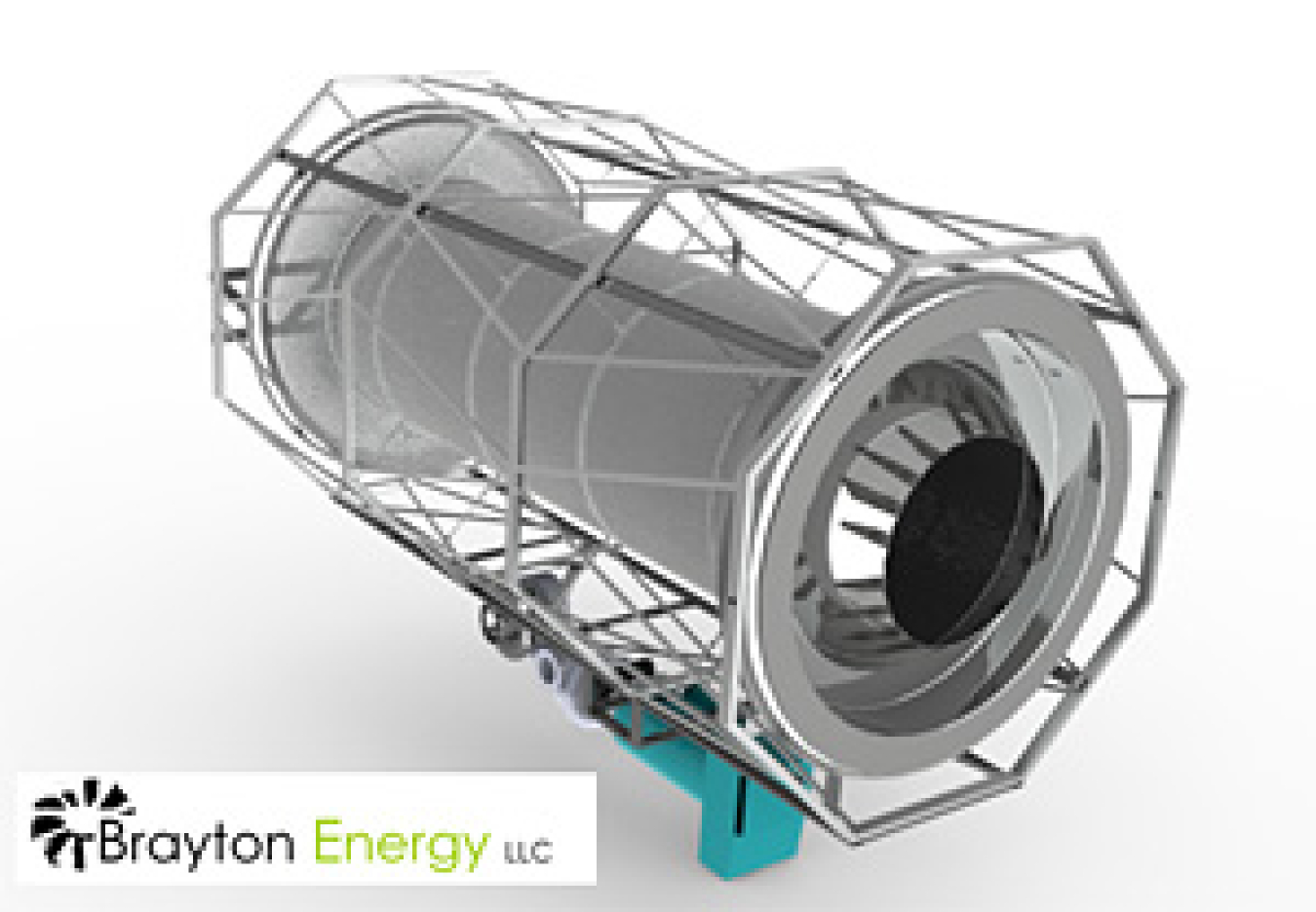--This project is inactive --
Brayton Energy, under the 2012 SunShot Concentrating Solar Power (CSP) R&D FOA, is building and testing a new solar receiver that uses supercritical carbon dioxide (s-CO2) as the heat-transfer fluid. The research team is designing the receiver to withstand higher operating temperatures and pressures than state-of-the art technology so that the device can enable higher efficiency systems.
Approach
The primary objectives of this project include:
- Achieving an outlet temperature for the receiver working fluid (s-CO2) that is greater than or equal to 750°C
- Maintaining high receiver efficiency
- Retaining durability over the lifetime of the CSP plant
- Significantly reducing the cost as compared to baseline receivers.
To satisfy these program objectives, the research team is performing a combination of analytical modeling and hardware testing. The use of s-CO2 in the power cycle is also being explored.

Brayton Energy is developing a SunShot SCO<sub>2</sub> solar receiver test article.
Innovation
State-of-the-art solar receivers rely on air or molten salt as the working fluid. However, air has low thermal transfer properties and molten salt is hazardous, costly, and temperature-limited. A solar receiver adapted to the s-CO2 recompression cycle with extended heat-transfer surfaces and a low-cost quartz-window assembly allows the use of low-cost materials and straightforward manufacturing methods. This major advance over state-of-the-art CSP systems would contribute directly to the SunShot Initiative's goal of $0.06 per kilowatt-hour.
Publications, Patents, and Awards
The SunShot CSP R&D program seeks to accelerate progress toward the cost target of $0.06 per kilowatt-hour through novel and revolutionary research into CSP technologies. Learn about other concentrating solar power research.

